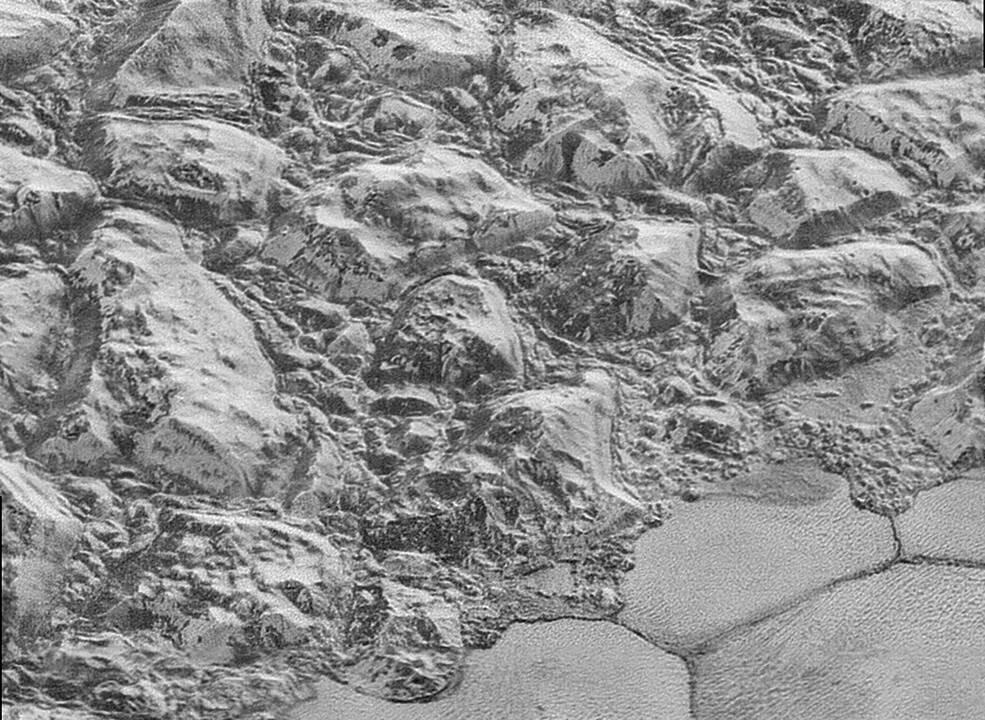NASA’s New Horizons space probe has sent back the first set of high-resolution images of Pluto ever seen.
The probe flew through the Pluto system on July 14, and is transmitting data from that time each week to Earth.
The latest pictures reveal an unprecedented amount of detail for the planet, including a wide variety of mountainous and glacial terrains.

This highest-resolution image from NASA's New Horizons spacecraft reveals new details of Pluto's rugged, icy cratered plains, including layering in the interior walls of many craters. "Impact craters are nature's drill rigs, and the new, highest-resolution pictures of the bigger craters seem to show that Pluto's icy crust, at least in places, is distinctly layered," said William McKinnon, deputy lead of the New Horizons Geology, Geophysics and Imaging team, from Washington University in St. Louis. "Looking into Pluto's depths is looking back into geologic time, which will help us piece together Pluto's geological history." NASA/JHUAPL/SwRI





